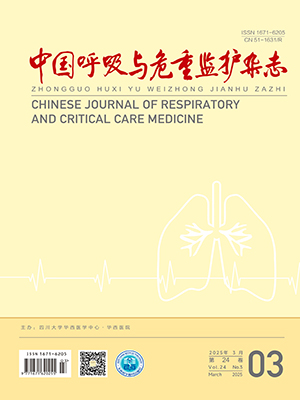Objective To explore the efficacy of humidified high flow nasal cannula ( HHFNC) for respiratory failure after ventilator weaning in post-operative newborns and infants with congenital heart disease.
Methods FromJanuary 2010 to August 2010, 33 newborns and infants [ ( 7. 8 ±8. 4) months, range 3 days to 36 months; weight ( 6. 6 ±3. 6) kg, range 2. 2 to 19. 6 kg] were treated with HHFNC ( 22 cases) and routine oxygen therapy ( 11 cases) for respiratory failure following ventilator weaning after operation of congenital heart disease. Symptoms, blood oxygen saturation ( SpO2 ) , partial pressure of oxygen( PaO2 ) , partial pressure of carbondioxide ( PaCO2 ) , incidence rate of re-intubation, duration of ICU, and hospital stay were assessed and compared between the HHFNC group and the routine oxygen therapy group.
Results There were no statistical significance in the duration of ICU, hospital stay, duration of mechanical ventilation, or infection rate between the HHFNC group and the routine oxygen therapy group ( P gt; 0. 05) . But the incidence rate of re-intubation was lower in the HHFNC group than that in the routine oxygen therapy group. Meanwhile SpO2 and PaO2 increased and PaCO2 decreased significantly in the HHFNC group ( P lt;0. 05) .
Conclusion HHFNC shows a clinical improvement rapidly and efficiently in preventing respiratory failure after ventilator weaning in post-operative newborns and infants with congenital heart disease.
Citation: CUI Yanqin,ZHOU Na,WANG Yanfei,MA Li,CHEN Weidan,YANG Shengchun,CUI Hujun,CHEN Xinxin. Efficacy of Humidified High Flow Nasal Cannula for Respiratory Failure after Ventilator Weaning in Post-operative Children with Congenital Heart Disease. Chinese Journal of Respiratory and Critical Care Medicine, 2012, 11(3): 231-234. doi: Copy
Copyright © the editorial department of Chinese Journal of Respiratory and Critical Care Medicine of West China Medical Publisher. All rights reserved




